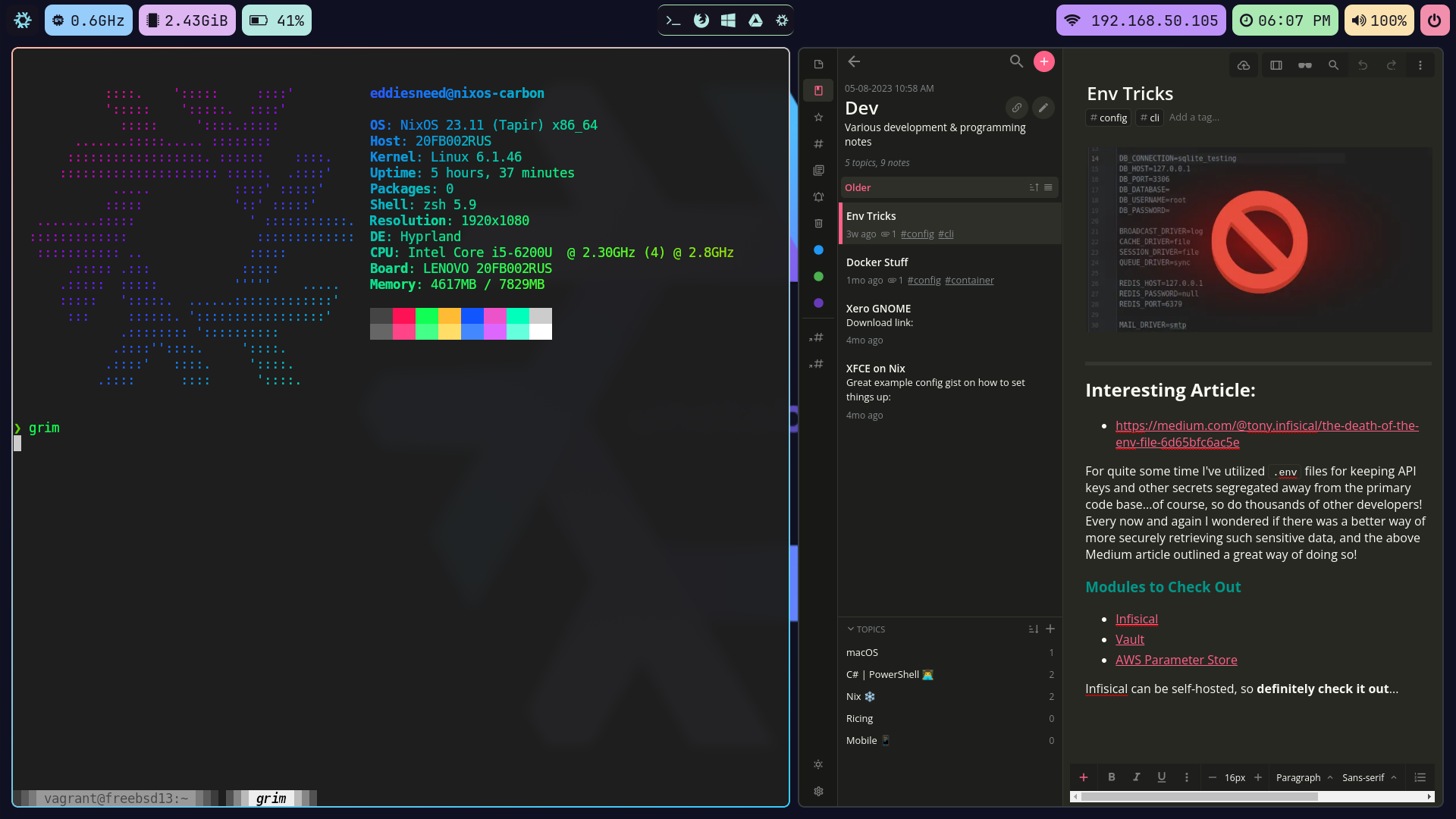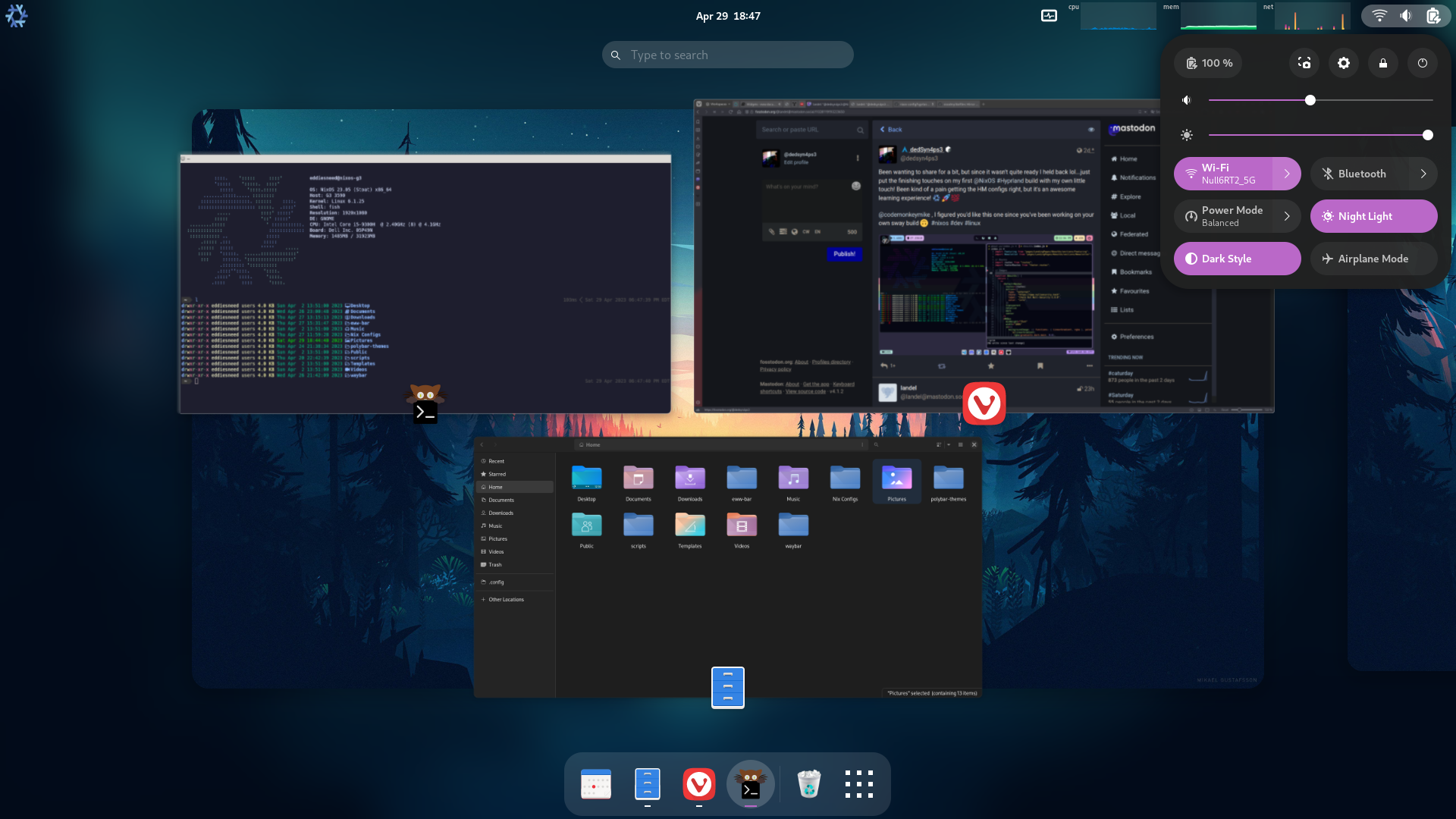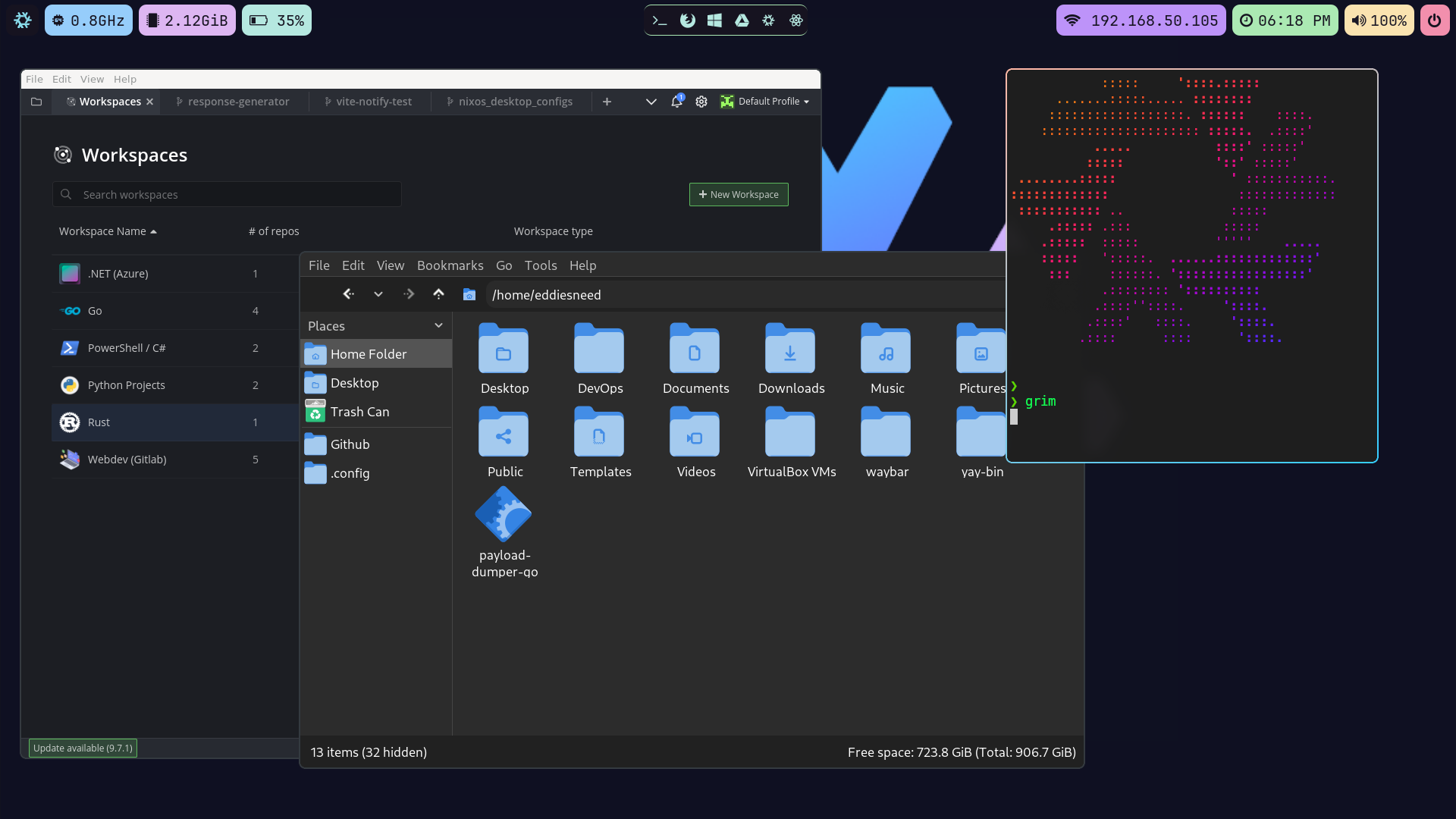NOTE: The purpose of this repo is not meant to serve as a source of truth when it comes to configuring NixOS. I've found myself coming back to this OS due to it's interesting declaritive approach to configuration
Over the past few months, I have consistently found myself grabbing my rebuilt Dell G3 to play around with NixOS. At first, it started off with brief periods of frustration resulting in powering down the laptop and going back to my favorite two Arch builds...what can I say, I 💙 me some good Archlinux! 😎
That being said, I kept coming back time and again, each attempt spending a little more time and coming away with a better understanding (and better function config) of this new declarative approach.
At this point, I'm constantly using my NixOS build! While I've yet to truly scratch the service, I have still managed to put together a decent little config to make reproducing my goto GNOME - Hyprland setup a breeze!
UPDATE: This newly refactored configuration setup is an evolution of the original Dell G3 config, and is now running on a recently acquired Lenovo ThinkPad.
I wanted to go ahead and share the basic setup configs for my G3 (and now ThinkPad) laptop as I continue to gradually expand and build upon it. There are dozens of excellent repo's out there for various setups (some of which have been instrumental to my own development), and I hope this can serve to be one more example for those new to NixOS and looking to get something like Hyprland up and running smoothly.
Using the home-manager configuration in this repo will result in the following desktops:
- GNOME
- Hyprland
It includes a handful of gnome-shell-extensions that I use on a regular basis for enhancing my desktop experience, as well as an additional Catppuccin stylesheet should you want to incorporate any other pastel colors into your main style.css file.
Remember, even though the nix file installs all of the aforementioned extensions, it's still up to the user to enable and configure them to their liking! 😁
The
Hyprlandconfig is set to utilizeWaybarfor displaying various metrics and shortcuts on the top and bottom of the screen. It expects the Waybar directory to be located in your user's$HOMEdirectory, but that of course can be changed...
It should go without saying that in order to use the configs in this repo as is, you need to have Home Manager and Nix Flakes enabled.
This is a very straightforward process and is detailed quite extensively in the various NixOS docs. If you are in need of a great resource for using Home-Manager and Flakes, definitely check out The Manual 🤘


